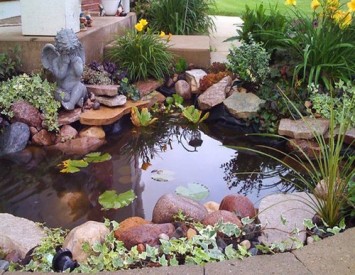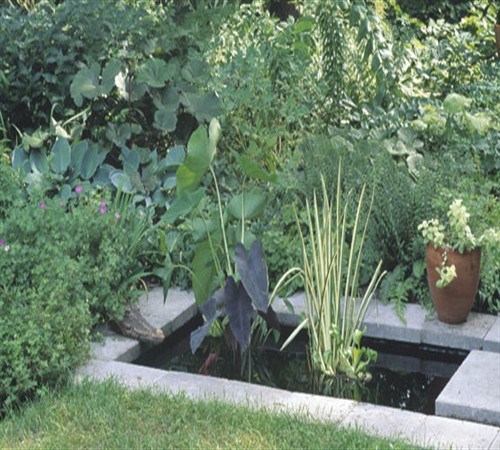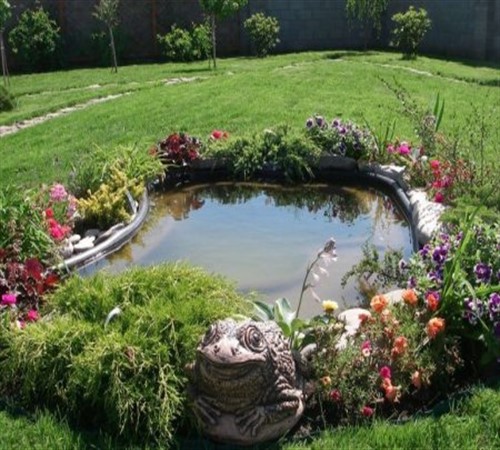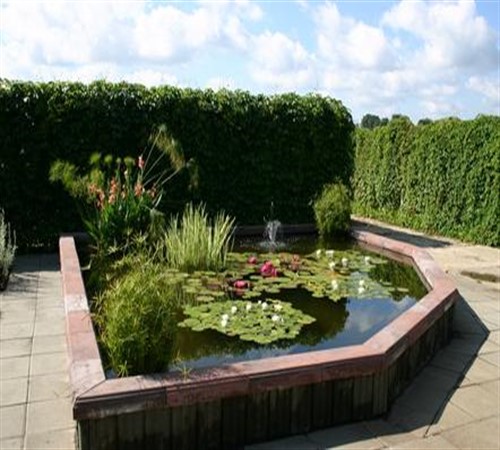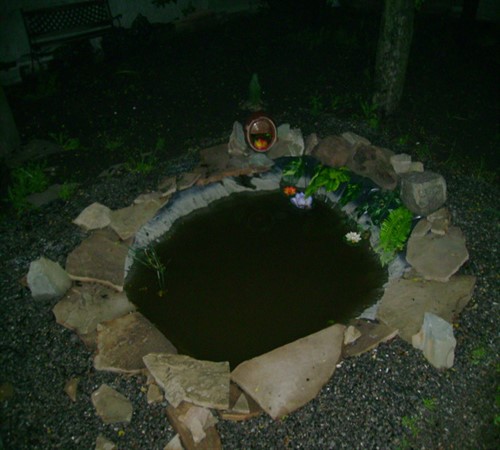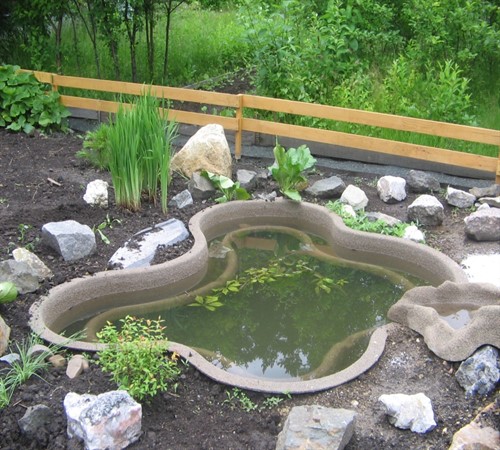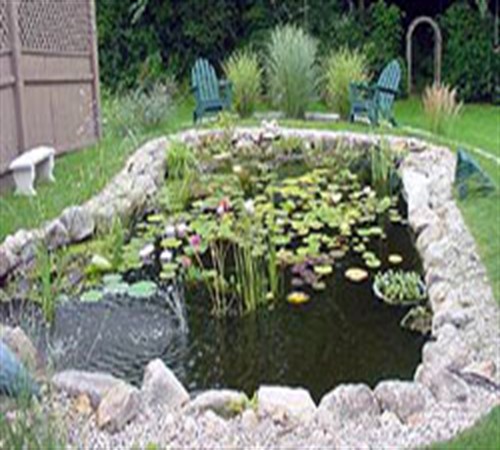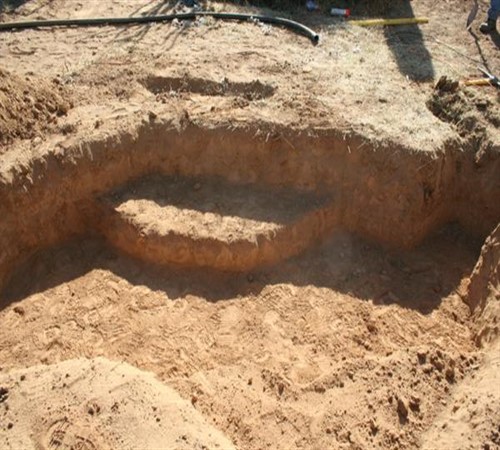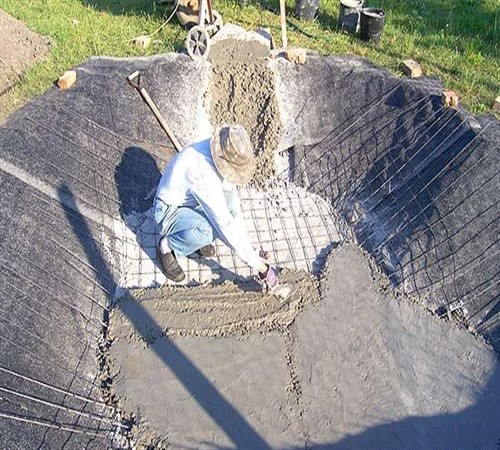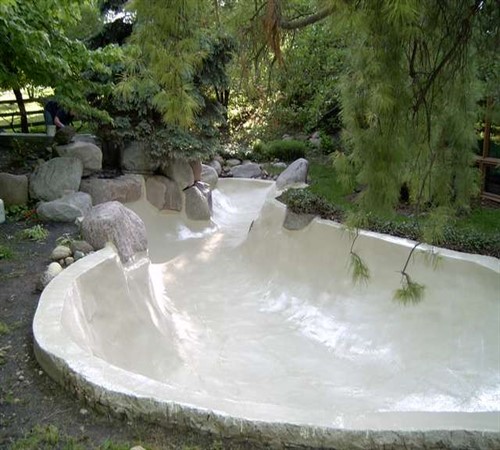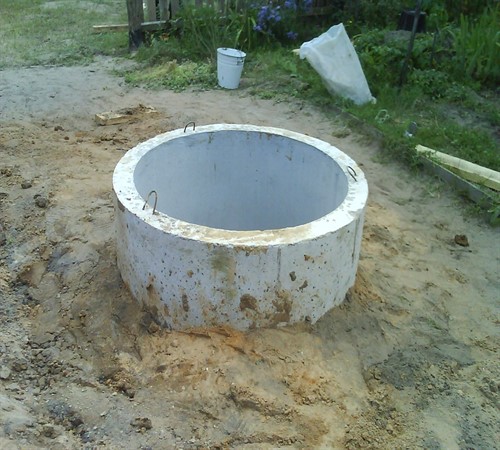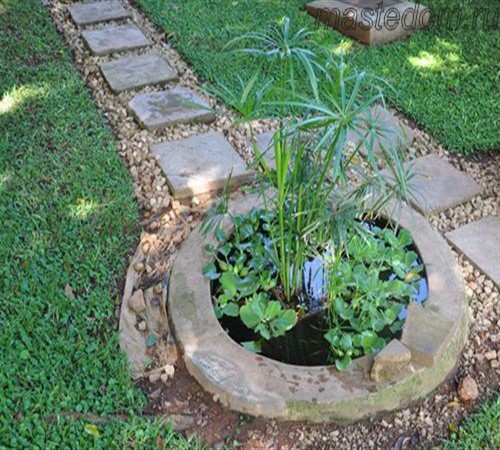In sultry weather, water is an oasis of life -giving coolness, so everyone wants to have a pool or at least a small pond on their own personal plot. If you contact a specialized company that manufactures landscape design, then it will cost a little pleasure.
Content
- Types of ponds
- Types of ponds, their advantages and disadvantages
- Determination of the location and size of the pond
- The materials necessary for the construction of the reservoir
- Technology for the construction of a buried concrete pond
- How to make a pond from a concrete ring?
- Decorative design of the reservoir
However, the abundance of the construction products of the modern market allows you to choose all the necessary materials for the independent improvement of the territory, based on any financial capabilities, and build the same pool or pond with your own hands, implementing its most secret desires.
Types of ponds
Based on the shape of the outlines, the ponds are divided into:
- A formal reservoir characterized by a correct geometric form. It is built in the front part of the garden, harmoniously complementing the existing buildings.
- Landscape, as close as possible in configuration to the natural pond. It is located in the depths of the garden, contributing to a comfortable rest.
Both formal and landscape ponds are:
- Deaded - made using concrete, film, clay materials, hard shapes.
- Raised - constructed from concrete, brick.
The positive and negative sides of the individual type of reservoir largely depend on the material chosen for its construction.
Types of ponds, their advantages and disadvantages
Based on the preferred shape of the reservoir, location, relief of the site, period of operation, installation speed and monetary resources, the choice of the main material for the construction of the pond in the country, therefore, the following types of water bodies are distinguished:
1. Film - represented by buttonener rubber, polyvinyl chloride and plastic film.
Advantages:
- mobility;
- the possibility of forming an arbitrary form of a reservoir;
- simplicity of installation;
- the likelihood of use for urgent repair in order to eliminate leaks in cast or hard waterproofing of the pond;
- the ease of repair in case of damage.
Flaws:
- there is a high probability of violation of the integrity of the material from physical influence, ultraviolet rays;
- the need to build coastal ledges;
- it is impossible to lay out without the formation of folds in ponds with straight angles;
- limited life;
- the danger of falling in a pond of young children;
- the need to mask the edges of the film;
- average cost.
2. Hard forms in the form of a finished bowl are made of plastic and fiberglass.
Pros:
- have high strength;
- equipped with coastal ledges;
- the ability to move to another place;
- relative ease of installation;
- the possibility of repair for minor damage;
- easy to maintain.
Minuses:
- limited size;
- strictly defined shape of the bowl;
- difficulties with transportation;
- the possibility of gradual destruction of the material under the influence of the sun;
- due to the slippery surface, the probability of falling children in it is high;
- high price.
3. From concrete.
Advantages:
- high strength of the structure;
- long service life;
- creating a pond of any size and configuration;
- ease of maintenance;
- concrete structures are compatible with various engineering equipment;
- low cost.
Flaws:
- the need for cladding with a frost -resistant agent;
- labor intensity of work;
- the need for waterproofing liquid glass to extend the operational period and preserve the biological balance required for the normal existence of the water world;
- duration of installation works.
Thus, despite the few disadvantages, concrete pond has undeniable advantages relative to other materials used to create a pond. In addition, from concrete you can recreate both buried and raised pond.
Determination of the location and size of the pond
Before you opt for a certain type of pond, it is worth considering a number of features:
- The presence of sustainable soil is necessary in order to avoid deformation of the constructed pond during the movement of the earth's crust.
- The absence of trees with a developed root system, since in hot weather the roots will break through the road to the water source, violating and over time destroying the waterproofing layer of the pond. In addition, the leaves flying around in the autumn period will clog the reservoir, contributing to the formation of algae and bacteria destructive for the water world.
- The moderate illumination of the pond, favorably affecting plants growing in water and floating fish.
When determining the size of the future structure, it is worth considering that the pond should occupy no more than 5 parts from the free territory, since its main purpose is to harmonious addition to the garden. However, a small pond requires constant care. In addition, a full -fledged biological balance in it is much more difficult to establish than in a reservoir of impressive dimensions.
The materials necessary for the construction of the reservoir
To carry out work, you will need:
- cement;
- crushed stone;
- sand;
- boards for formwork;
- level;
- reinforcement;
- wire;
- waterproofing material (butyl, polyvinyl chloride film or ordinary roofing material);
- primer;
- shovel;
- concrete mixer;
- brush;
- liquid glass.
Technology for the construction of a buried concrete pond
Preparation of the pit
- By the size of the future reservoir, given the ledges for installing pots with plants, put pegs with a step about 70 cm and pull the rope between them.
- Dig a pit, increasing a depth of 25 cm to thicken the bottom.
- The necessary ledges to form as the earth is noted.
- The walls of the pit make with a slope of 20-30 ° C.
- Remove the sticking roots of trees, plants.
- Pour the bottom with 15 cm crushed stone, align.
- Cover with a layer of sand 10 cm, moisturize a little and carefully compact.
- Without tension, lay the waterproofing coating, starting from the center to the surface of the earth. Leave a supply of 10-15 cm at the edges and crush reliably stones to avoid sliding during subsequent work.
Bill with concrete
- To mix the solution of sand and cement in relation to 3: 1 so that it immediately lasts one layer of filling the entire area of \u200b\u200bthe future pond. Otherwise, cracks will appear over time in the places of incineration of the solution.
- Pour the wall with a cement mortar first, and then the bottom of the pit 6-7 cm with a layer of 6-7 cm.
- Using reinforcement and wire, build a mesh with diameter of cells about 7-10 cm.
- In uncontained concrete, press the reinforcing mesh so that the edges protrude slightly above the concrete coating.
- After the laying layer dries, mix the cement mortar again.
- Moisten the walls, the bottom of the pit with water.
- Pour 2 concrete layer 5-6 cm thick, while the upper edge should overlap the lower concrete layer 3-4 cm.
- Form the upper edge, carefully pressing the edges of the waterproofing coating to it.
- To align the bottom, the walls of the pit.
- For uniform drying, the flooded surface is best covered with cellophane.
Application of liquid glass
- After the concrete bowl is completely dry, wipe the area from cement dust or apply a primer.
- Pour the surface of the bowl with a liquid glass with a thickness of 3-4 mm or apply a special paint.
After drying, you can proceed to the direct design of the reservoir.
How to make a pond from a concrete ring?
Preparation of the pit for subsequent work is carried out similarly to the above construction.
Then:
- On top of the tamped layer of sand, pour the bottom of the pit with a cement mortar 10 cm thick.
- After drying, install the finished ring.
- Send all the irregularities and places of the nozzle of the ring with the bottom with a cement mortar.
- The free space between the walls of the foundation is and the ring is filled with the ground and tampedly tamp.
- Clean the surface of dust.
- Apply a primer, special paint or liquid glass, or lay a polyvinyl chloride film.
- Make the edges of the pool.
Thus, a pond from a concrete ring greatly simplifies the work and reduces the installation period.
Decorative design of the reservoir
The constructed ponds will help to perfection of various sizes, stones lined with both the edge and inside the pond, creating intricate outlines.
It is advisable to install aquatic plants in pots to the bottom and existing ledges of the reservoir.
It does not hurt to launch a few fish in the pond.
In a word, you can arrange a pond by any elements, as the imagination that has played will tell.
